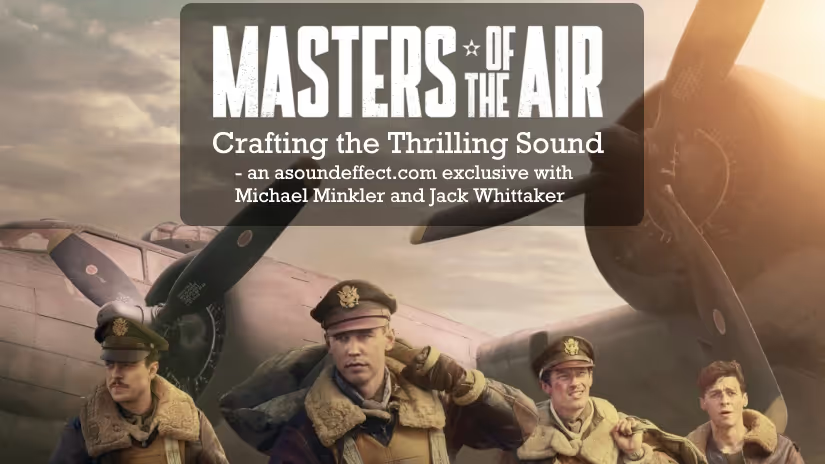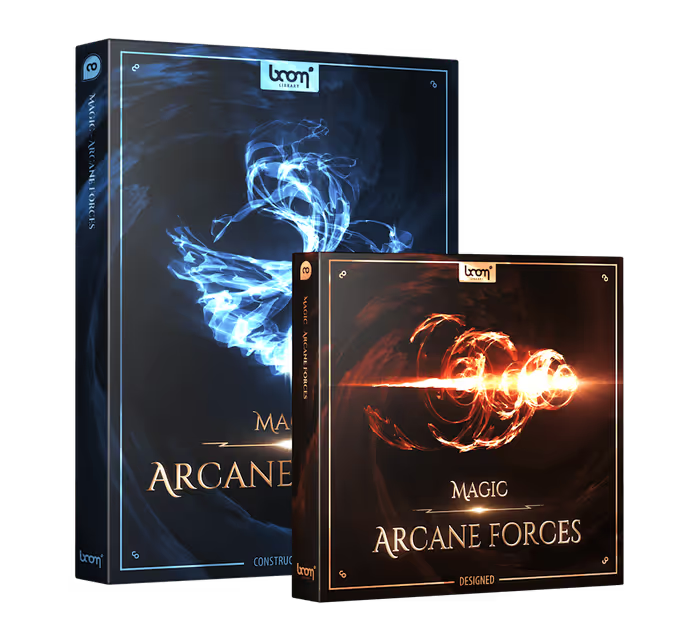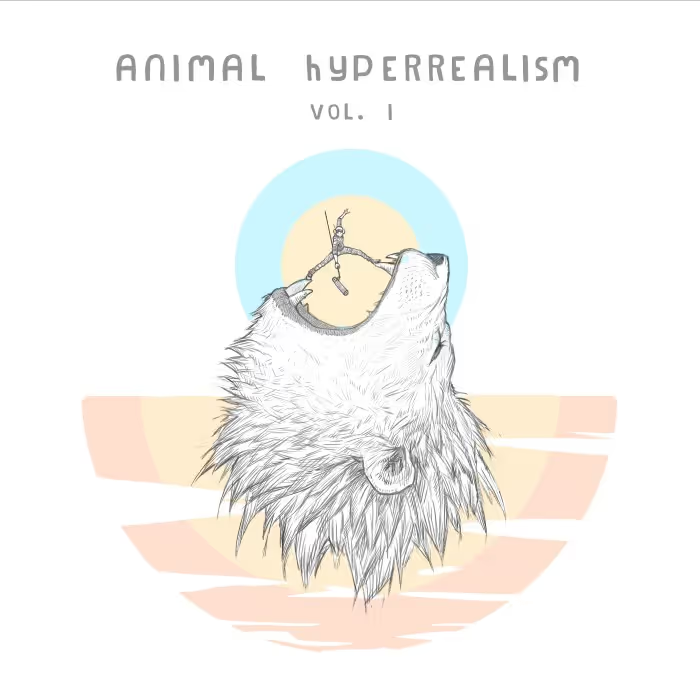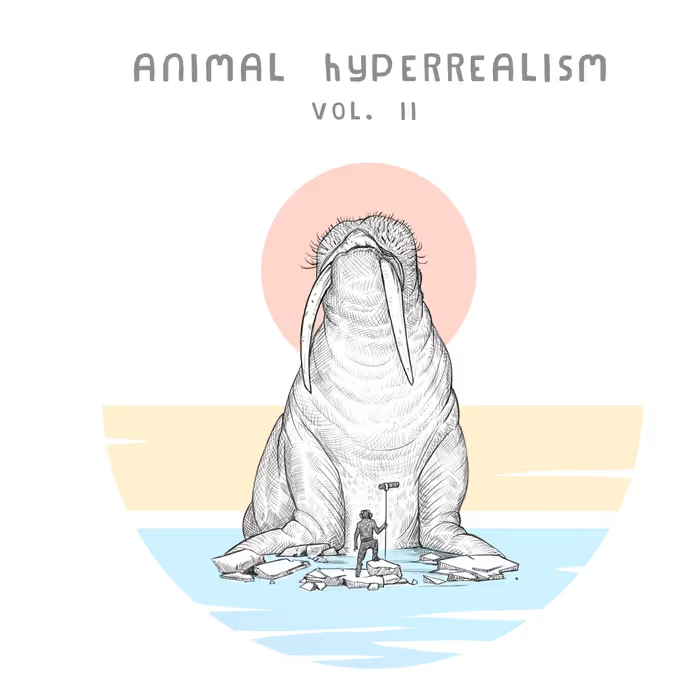Apple TV+ series Masters of the Air is one of those shows you want to see on the biggest screen possible. The incredible scale of the air battles is IMAX-worthy, and the sound of the planes falling from the sky is gut-wrenching. The portrayals of the air battles are enough to induce panic attacks.
Emmy-winning supervising sound editor Jack Whittaker and Oscar-winning supervising sound editor/re-recording mixer Michael Minkler at Formosa Group used sounds they recorded from an actual B-17 plane to create the feeling of being on-board with the airmen during harrowing battles thousands of feet above the ground. But it’s more than just cutting in literal sounds; they capture the emotion and danger of the airmen and convey their experience to the audience through sound.
Here, Minkler and Whittaker talk about recording the B-17, using sound to express danger, recording tons of ADR to finely control the sound during the air battles, creating plane nosedives and hard banking turns from steady-state engine sounds, creating a world on the ground that’s as compelling as the one in the air, and much, much, more!
Masters of the Air — Official Trailer | Apple TV+
When did you get started with sound editorial on the show? What were some of your first tasks for the sound?
Michael Minkler (MM): Sound editorial started in January 2022, though Jack and I met in June of 2021 and started to discuss how we were going to tackle the show. We didn’t get our hands on a cut until January 2022, so that’s when we started getting heavily involved with recording, designing, and planning. The mix did not start until September 2022.
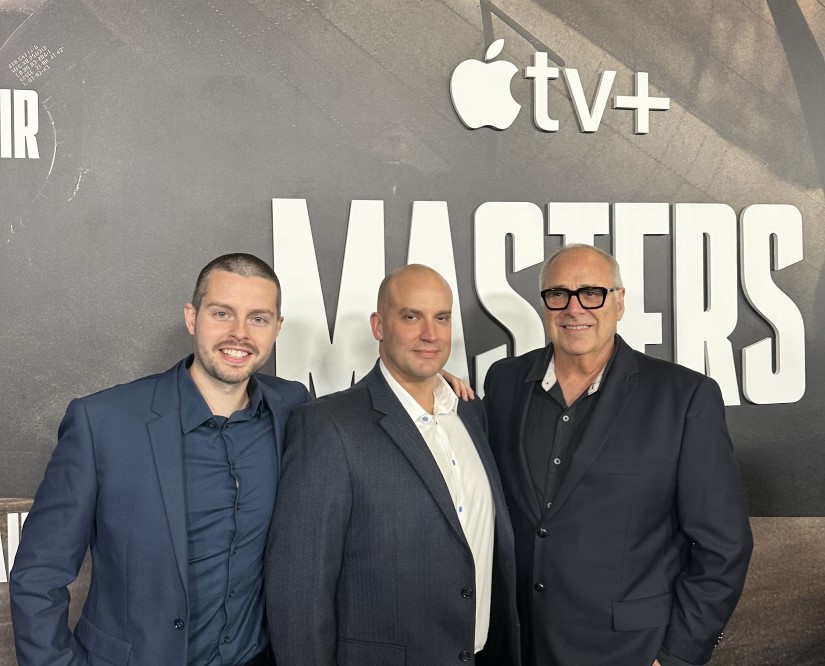
The initial sounds you were feeding the picture editorial team were how things ‘should’ sound (literal sounds), but then you shifted into how they ‘could’ sound (the artistic interpretation of how to play a scene). That happened when the picture was locked?
MM: Well first off, the word ‘locked’ was never used until December 2023. The picture was always changing to accommodate new ideas, new content, dialogue, music, sound effects, and VFX. All episodes were being worked on constantly and one new idea in any episode could affect another. Eventually, it did end when all the parties were happy.
Yes, we started with authentic sound effects, but then it became a whole process of creating an emotional journey. Authentic sounds aren’t necessarily descriptive, or emotional. That’s when the sound design starts to take place. Jack and the sound effects team start molding sounds from the fundamentals.
Jack Whittaker (JW): Mike hit the nail on the head. He, myself, Duncan McRae (effects re-recording mixer), and Dave McMoyler (Supervising dialogue/ADR editor) all got to fly in an actual B-17 plane called ‘A Sentimental Journey.’ And Mike and I also went to Arizona to record that same plane.
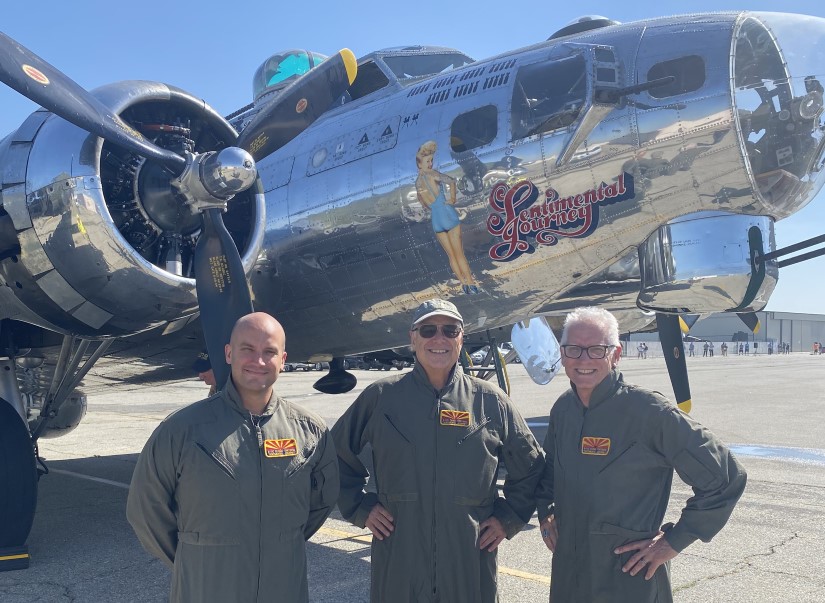
We both became aware that this was an amazing-sounding piece of machinery. It has many different characters to it depending on where you’re standing, inside and out. Emotionally recreating that feeling was quite complicated because of the feeling that you get when you stand in front of those propellers at full power. It wasn’t just about making a facsimile of real recordings.
I spent a long time refining during the sound design process, playing around with ideas and concepts about how to convey that spatially in the soundtrack. We tried to make the viewer feel like a passenger on the plane – as though you are on board with the crew. For instance, there are four engines on the B-17 and we spaced out four different engine sounds into the room with the energy, strength, and power of those engines.
We were playing geography within each plane, and then also trying to tell you if you were in plane A, B, or C at all times.
We also added other elements for the ambiences that you’d hear in different sections of the plane. You feel the plane changing according to where you are, whether you’re in the nose, the belly, the tail, with the radio operator, or the pilots. Those positions sound like different, unique, discrete areas.
At the same time, we were trying to make each plane have a distinct sound because it cuts between lots of planes all the time and it can get confusing. So we tried to have different pitch harmonies for the different planes, to help you with that geography.
We were playing geography within each plane, and then also trying to tell you if you were in plane A, B, or C at all times. It was a difficult dance to manage.
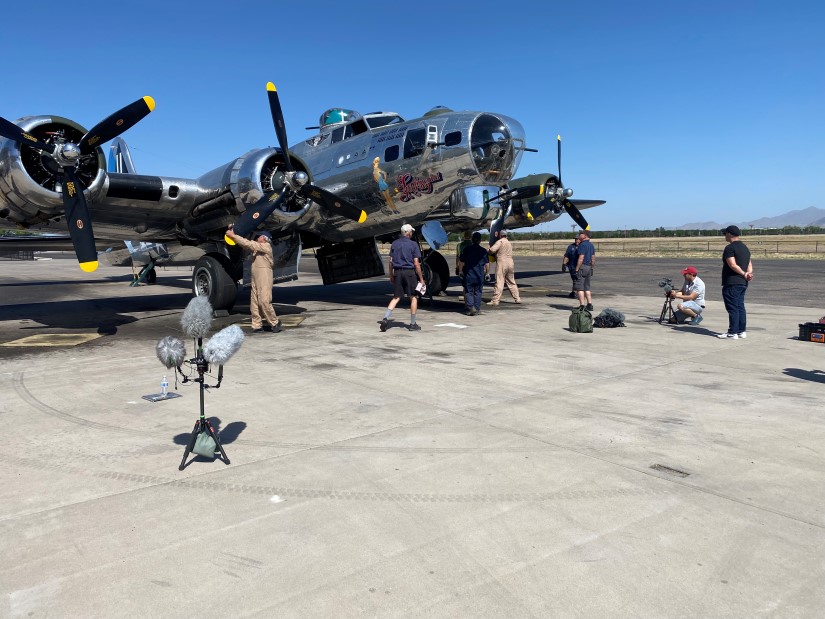
Let’s dive further into recording the B-17s. So you captured every sound you could, like engines, guns, doors, hatches, switches, knobs, and so forth?
JW: Exactly. We went out to Arizona with Formosa Group’s sound recordists Charlie Campagna and Eric Basta, as well as a couple of my crew, who are also great location recordists. There we had access to a working B-17. The DNA of the planes that we hear in the show came from those recordings.
Charlie, Mike, and I had worked out a plan of mic placements using schematics of a B-17.
Charlie, Mike, and I had worked out a plan of mic placements using schematics of a B-17. We mapped out all of the positions we thought would be the most interesting places to listen to on that plane and then built a shot list of what we were hoping to capture.
A big recording session is like being in production, in that time is very limited with the action vehicle. It’s a very expensive endeavor so you need to be as prepared as possible when you turn up on the day. You go with a plan and then you have to adapt the plan as needed. So Charlie – knowing that our time would be limited – built these custom rigs for the interiors and the exteriors.
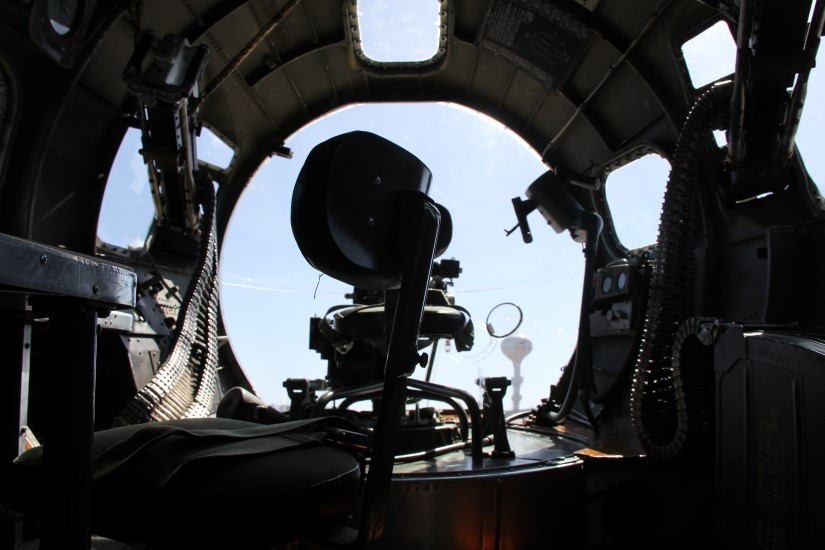
MM: There were 60 microphones and 6 recorders. We recorded every possible thing we could while the plane was in flight and while it was on the ground. We also recorded the B-25, and we supplemented those sounds with foley.
JW: We had four days with the planes. We recorded multiple takeoffs, landings, in-flight sounds, and on-the-ground exteriors and interiors. We got as much access as we could to that plane. We wanted unique, new material as the starting point for this show.
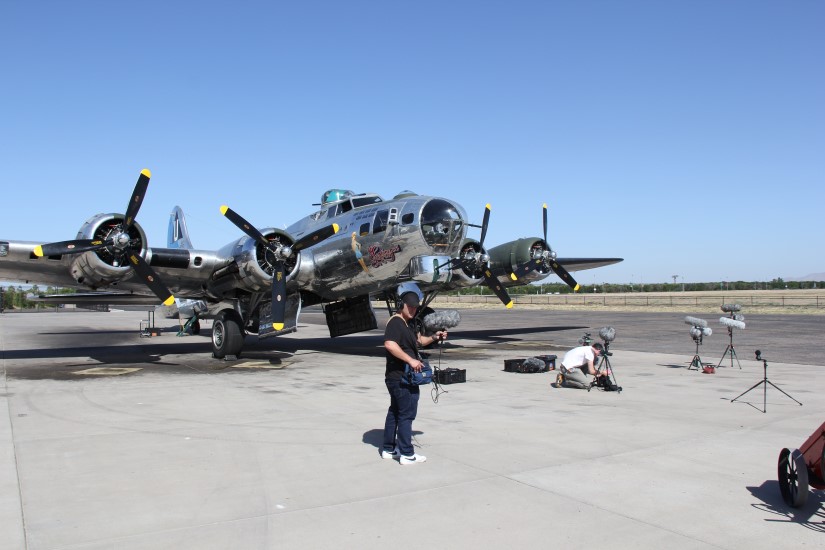
B-17 aren’t built to roll or do loops, but there are scenes in the show where the planes are banking hard, or falling out of the sky and twisting in the air. The recordings of the B-17 you captured were probably steady-state engine sounds for the most part. Were you using Doppler to make those steady engine sounds match the action on screen?
JW: Exactly. Capturing the feeling of what you hear of that plane in person is complicated because those planes are noisy, but they’re also designed to be stable. The RPM of the engines is very steady so you have to put that variance in there using different tools. We were pitch-bending sounds up and down.
The RPM of the engines is very steady so you have to put that variance in there using different tools.
Additionally, when you’re in front of the plane, there’s a sort of comb-filtered wash of sound. It’s the whole frequency range coming at you at different speeds and sound waves. Trying to get that feeling on the dub stage was a big challenge.
We wanted to record it at the speed it flew at. That’s a big thing for the show. We got a couple of passes right in front of the props, and the sound has different frequency layers with different rhythms. There’s a slower, low-energy pulse that sounds like it’s at a different RPM. It’s almost like a tug boat in a harbor type of sound. Then, the highest sound you hear is almost like a chainsaw. Then, there’s a muscle car engine sound in the middle. All those frequencies are happening simultaneously.
…when you’re in front of the plane, there’s a sort of comb-filtered wash of sound. It’s the whole frequency range coming at you at different speeds and sound waves.
Capturing that was challenging. Charlie did such an amazing job of creating mic setups, like static outrigs that were LCR. We had four recordists roaming around, recording in different spots as we got opportunities to record this plane moving around on the tarmac or running the propellers at different speeds.
Then we collated all of those – several different outside rigs, and the 60 mics inside. We had a ton of coverage that we were very grateful for. To create the sound of the plane in the show, we took all of that raw recorded material and built a super session so it all played. We cherry-picked sounds from the best angles and made different mixes.
We also made mixes of those propellers as we needed to make new sounds that we could use as the body of those pre dubs and then we added different flavors on top of that.
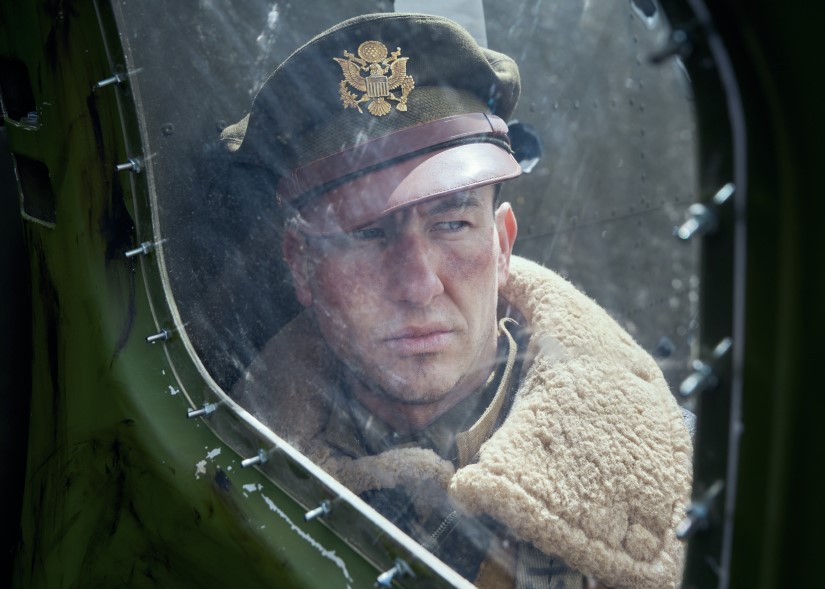
Were there any sounds that you realized later that you forgot to capture on the B-17?
JW: Well, we didn’t forget to record it, but on the first B-17 we recorded (the one that was still able to fly) the bull turret mechanism didn’t run. So we didn’t get it on that plane. Luckily, there was another plane where we had another crew recording for the companion documentary. They were able to record the sound of the bull turrets for us.
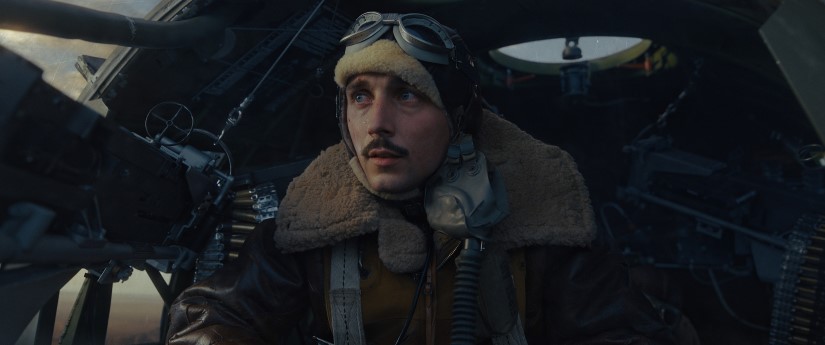
Once you collected this library of literal sounds, can you talk about using those to tell the emotional story you wanted to tell? How did you use those sounds to help tell the story of the airmen’s experience in those planes?
MM: From the very beginning, our first conversations with the producers were about needing to convey fear and heroism in the face of that fear. So when you are building sounds, sometimes you want things to sound pretty, and sometimes you want them to sound rough. If there’s danger at all times, it’s going to sound rough. It’s going to sound dangerous. It’s going to sound very tinny up there inside those machines.
It’s going to sound dangerous. It’s going to sound very tinny up there inside those machines.
There is no comfort in those B-17s. It’s very metallic. Everything hurts. Everything can kill you in those planes when you’re being shot at, and you’ve got flak exploding around you, and you’ve got bullets ripping through the fuselage.
Then there’s fire danger and extreme cold. It can be 50 degrees below zero at 25,000 feet. Things are flying around inside there. The pilot is maneuvering the plane to get himself out of danger and the crew doesn’t know which way the plane is going – up, down, sideways, spinning. They don’t know. It’s “hold on for dear life while you’re shooting a gun while you’re trying to map out your coordinates.” It’s just horrendous.
So within the sound effects track there’s jeopardy. You can hear the jeopardy everywhere.
The whole flight may take 12 hours, and you’re in mortal combat for about three of those hours. Your chances of coming out of it are small. Yet they all knew that they had to do the job, so they just did the job in that environment with all of these things that can kill you.
So within the sound effects track there’s jeopardy. You can hear the jeopardy everywhere. It’s all around you. Something can happen at any second that will kill you.
JW: On top of our plane recordings were two extra layers of metallic sounds of the plane resonating and shaking and vibrating and rattling according to what the engines and the plane were doing. It was another way to tell that story of crunching metal, groans, bangs, and sharp, scary-sounding things that could kill you at any time, as Mike was saying.
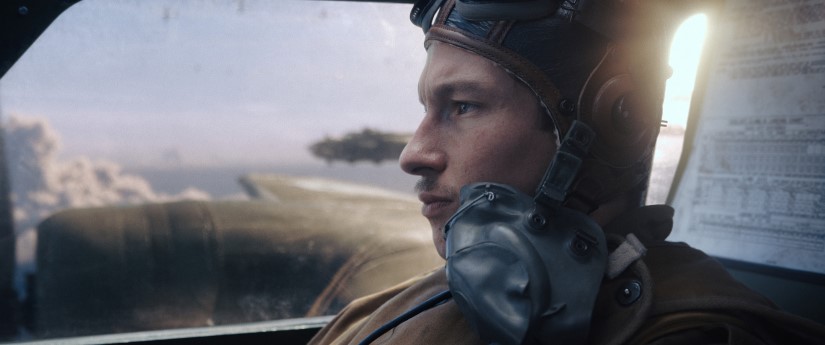
Were those metal sounds from foley or did you do a metal recording session?
JW: It was both. We love foley and we love real sounds as well because. Within the depth of field of sound, they fill up different spectrums. You get size with distance – mid and close – and we try to cover those with different sub-departments within the sound team. Foley always helps with that. We didn’t ever just rely only on foley, but we embraced it as much as possible.
MM: 99% of all sound effects inside the B-17s were recreated. And 85% of the dialogue inside the B-17s was looped. The fuselage itself was on a gimbal during production, and it’s making a lot of noise, so that dialogue can’t be used.
85% of the dialogue inside the B-17s was looped.
We looped so much because we wanted complete control of the atmosphere/action and the amount of damage that was inflicted on the plane. We didn’t want to be stuck with certain sounds that were embedded in the dialogue tracks during battle. But having the opportunity to loop almost all the dialogue was a blessing. The actors were very eager to improve their performances and the producers and writers were able to improve the storytelling in a never-ending process of change.
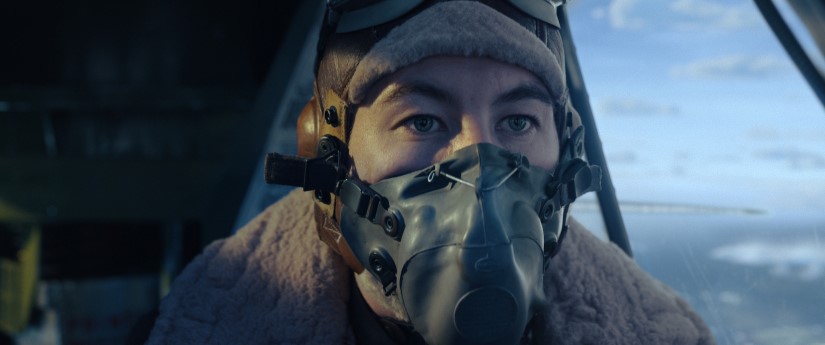
The airmen wear masks most of the time. Were there mics in the masks? Was additional processing added to help distinguish the in-mask dialogue (for shots directly in front of the airmen) and the dialogue heard through the airmen’s headsets?
JW: The airmen put the masks on above 10, 000 feet because that’s when they start taking oxygen on board. We found, as Mike said, that some of the dialogue was okay in the non-combat moments. Even so, by the very nature of being inside masks, the dialogue was quite often unintelligible and overloaded and didn’t sound great.
We bought real pilot’s masks but we found that if we went too hard and leaned into that too much, then we lost intelligibility.
For the headset processing, we had various processing chains. Mike worked with Dave McMoyler (ADR Supervisor) and the mix tech Shane Stoneback on that stuff a ton. We played around with a few different iterations of how it would sound in the mask. You often hear of sound people capturing IRs and using that on the sound of the dialogue. We did that, and we recorded on the ADR stage with masks. We bought real pilot’s masks but we found that if we went too hard and leaned into that too much, then we lost intelligibility.
So we did re-record a lot of the dialogue in ADR and came up with an approximation through processing that we were able to turn up and turn down as needed for intelligibility. So when it’s smooth sailing (or as smooth sailing as it gets), we could lean into that effect more. And when we got into the action scenes, we pulled back on the processing somewhat.
Mike mixed the dialogue and had full control of all of that processing. He was continuously tweaking that. We were very cognizant of the intelligibility. This is a big action piece, but we also want it to play on a soundbar or people’s headphones in a way that they can hear it. It’s a very common thing these days that people are putting on subtitles when they watch a movie or show and we were trying to avoid that.
 Tesla Model X 2015 electric full size crossover SUV sport utility vehicleKrampfstadt Studio65,00 $32,00 $51% OFF
Tesla Model X 2015 electric full size crossover SUV sport utility vehicleKrampfstadt Studio65,00 $32,00 $51% OFF
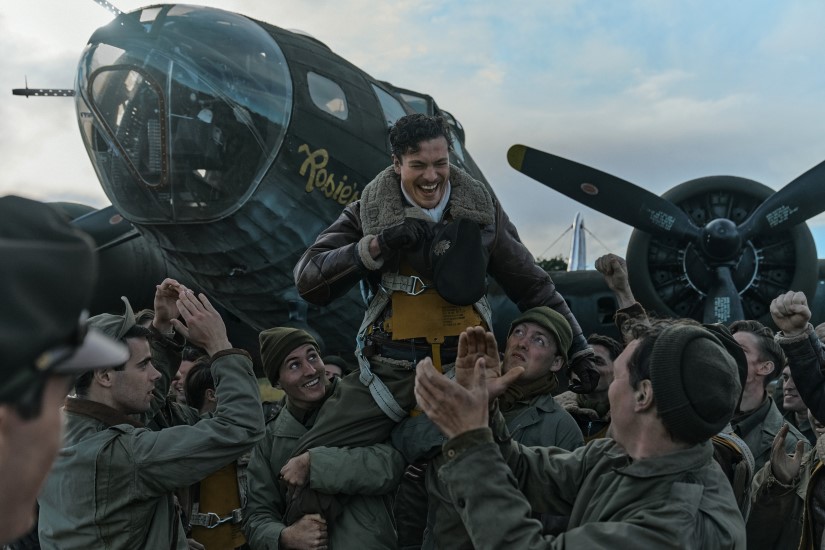
In a large theater, it’s easy to understand the scale of what you’re seeing, but when you’re watching on a TV or a smaller screen (like your phone), you lose that. So how did you use sound to help show the scale of these air battles?
JW: We approached this project like a series of movies. We cut it like a movie with as much detail and intricacy as we would cut a movie of that scale because that’s what it deserved. We tried to do that with all of the different elements: production dialogue, ADR recording (there are 377 speaking parts in this show, I think), sound effects, foley, and loop group.
In the mixing, they scaled down a big movie track, rather than turning up a small-scale production.
All of those things we attacked like it was a movie because we wanted to elevate it as much as possible. Even though the final playback format is not as big, we cut it as though it would be played back on the largest venue.
In the mixing, they scaled down a big movie track, rather than turning up a small-scale production. After we listened on different sets of speakers, we added material to give a bit of bite on a smaller speaker or a small TV. But we tried to not make it so huge that you were going to adjust your volume the whole time. We could have killed you with the explosions, and I don’t think we did. We tried to “keep it in the pocket.” That was really in play on this show. We were always aware of that.
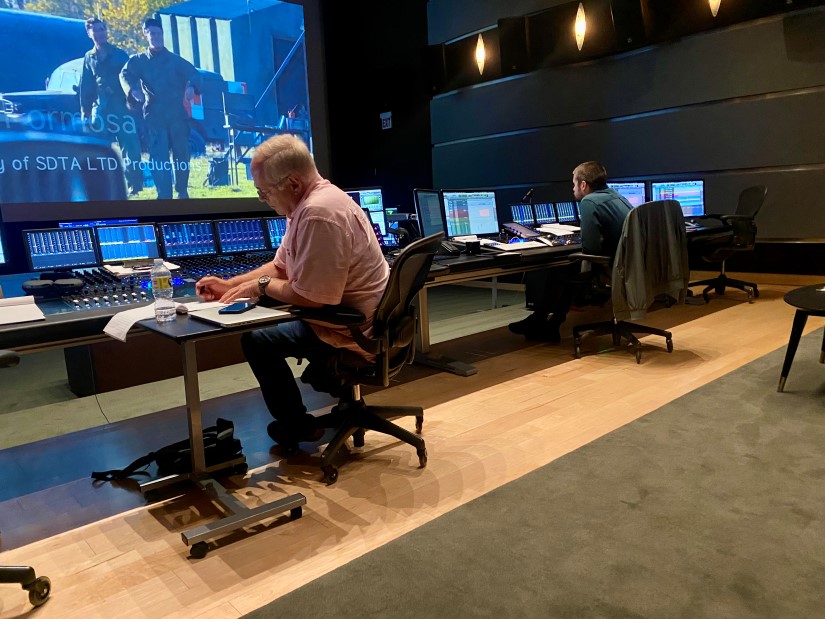
Were there any sounds that you avoided using in the air battles? What cluttered up the track the most?
MM: We never got to a point where we were taking out sounds because they were very finely crafted by Jack and his team. I sat with Jack a lot. We conversed often. We listened to sounds with dialogue and with music. And so we knew what we didn’t need. We had to sculpt it.
Everything is shifting and moving throughout the mix. But going into the mix, they’re in good shape.
It’s very much like orchestrating the sound effects so they don’t bother each other and orchestrating sound effects against the dialogue so it doesn’t bother the dialogue. And then we’d throw in the music and shift the music components around – sometimes a lot, sometimes not so much, or not at all.
Everything is shifting and moving throughout the mix. But going into the mix, they’re in good shape. We didn’t have to drastically change anything, but the fine-tuning went on forever because the picture was always being changed. The dialogue was always being changed. It was being rewritten or re-performed. Musical components were being changed because of the directors’ or the producers’ requirements from the composer, or the composer had new ideas and wanted to use different instrumentation on a cue. So we would redo it. All the pieces are moving at all times.
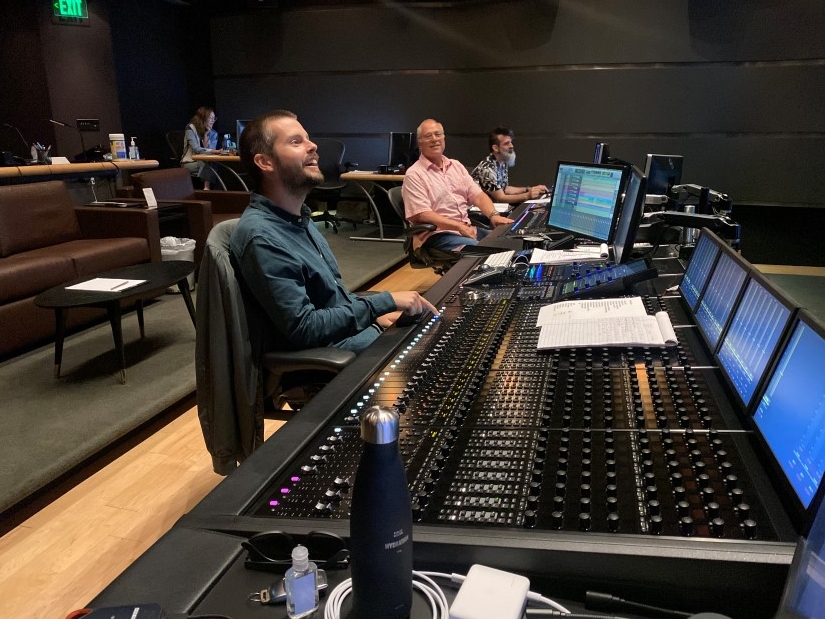
Was mixed in Dolby Home Atmos? How did you use that format to help clarify what was happening in the air battles?
MM: We started mixing in theatrical Atmos and went for about four months, going through all the episodes a couple of times and making a couple of passes on them.
And then we had a little breather; we had a little time to calculate how it was going to fold down through our normal fold-down techniques to get it into a home theater situation. We did a lot of testing with televisions, with different size sound bars, different 5. 1 home theater systems, and headphone systems.
We did a lot of testing with televisions, with different size sound bars, different 5. 1 home theater systems, and headphone systems.
We didn’t like the way it was folding down, so we kept tweaking for a long time. We converted the stage over to mixing in home theater Atmos. Based on what we learned, we re-evaluated our dynamic range, our low-end components, our pan laws with the music, the panning with the sound effects, and compression of dialogue. Everything shifted to maximize what we could get out of a home theater environment that would play well on regular television or soundbars (as a lot of people have these days).
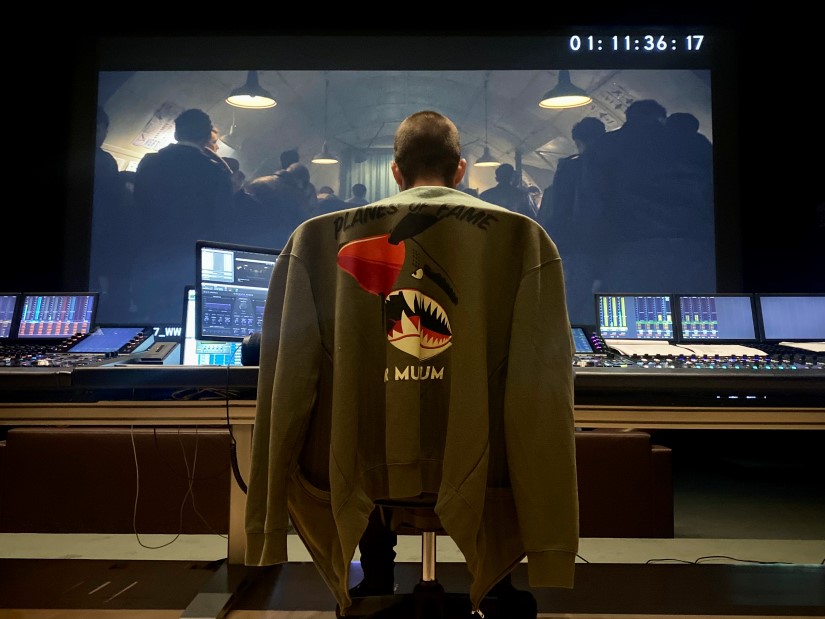
What was the most challenging scene to mix? Or, was there a scene that went through numerous iterations before you found the best way to mix it?
MM: I’d say the very first nosedive scene in Ep. 1. It’s supposed to take you by surprise and it’s our first chance to introduce our audience to what a B-17 sounds like in battle. It starts full throttle. It’s just, BAM! You’re in it. It was a hard one to figure out. It was a hard one for the picture editorial department to figure out also. They re-cut that thing 50 times.
They knew that they wanted to deliver that sequence as their first one, but how to deliver it took a lot of experimentation on everyone’s part.
They knew that they wanted to deliver that sequence as their first one, but how to deliver it took a lot of experimentation on everyone’s part.
So I would say that was the most difficult because we were chasing them and they were chasing us. We’d come up with some sounds and they’d change the picture and so we’d change our sounds. We were going back and forth, always delivering each other new ideas. We just kept evolving it. That scene set a tone for where we’re going to go the rest of the way. It was very important to get it feeling pretty good.
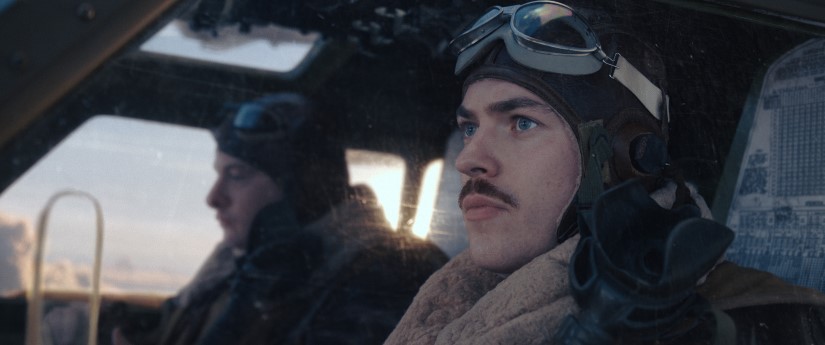
What was the most challenging scene for sound editorial and why? What were some of your challenges?
JW: Any of the planes failing were challenging in their different ways. We have maybe four separate planes in the show when you’re on board with them when they crash or as they go down. We wanted to tell that story with sound as best as we could.
Any of the planes failing were challenging in their different ways.
The plane starts with four engines and then they might go to three, then to two, then one, and then none. In Ep. 3, there’s a scene at the end where Cleven glides in because all engines have failed. He says, “We’re a glider now.” We worked on that scene a lot, but all of those were challenging. There’s a scene in Ep. 9 (no spoilers), where one of the main characters crashes and we wanted to play on that. Then there’s the scene in Ep. 3 when Quinn is going down.
There were a lot of challenging scenes in different ways. The battle in the last episode was a big one. And as Mike said, that first air sequence was a challenge because we played around with trying out different points of view of how to introduce that plane, and the cut changed quite a lot. So there were different variants of that scene – whether we started in a dreamy state or a hard cut in, which is what’s in the show. That was a challenge for sure. The VFX was always a work in progress so that always makes things a challenge as well. We would cut it and mix it, play it back, and then the VFX would change considerably.
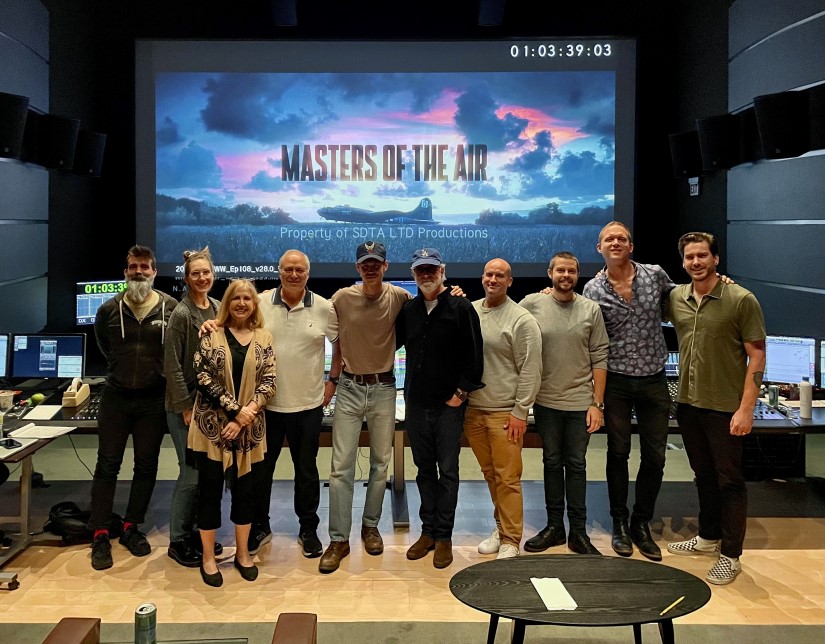
In terms of your sound work, what has been your favorite part of working on Masters of the Air? What was the most enjoyable part of creating the sound for this show?
JW: The crew on this was amazing. We had a fantastic sound crew.
Something we try to do in the air and on the ground as well is always tell the story.
When I had the first spotting sessions with Gary Goetzman, he said, “It’s always about energy and storytelling and keeping the audience engaged.” Something we try to do in the air and on the ground as well is always tell the story. There’s a lot of sound in there, even on the ground. Even in the quiet scenes, we are continually keeping the ear of the viewer. We’re keeping them excited. There’s always sound going on and it may just play at a subconscious level but I’m really proud of that. I had a few people text me in the last few days about Ep. 6, saying how great they thought that sounded. That episode is all on the ground and yet there’s continuous sound. There’s the sound of the next thing always coming in and it keeps the energy going even in a dialogue scene. I’m really proud of that work.
A big thanks to Michael Minkler and Jack Whittaker for giving us a behind-the-scenes look at the sound of Masters of the Air and to Jennifer Walden for the interview!
 Tesla Model X 2015 electric full size crossover SUV sport utility vehicleKrampfstadt Studio65,00 $32,00 $51% OFF
Tesla Model X 2015 electric full size crossover SUV sport utility vehicleKrampfstadt Studio65,00 $32,00 $51% OFF

